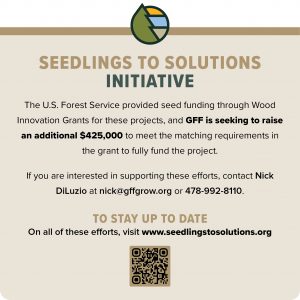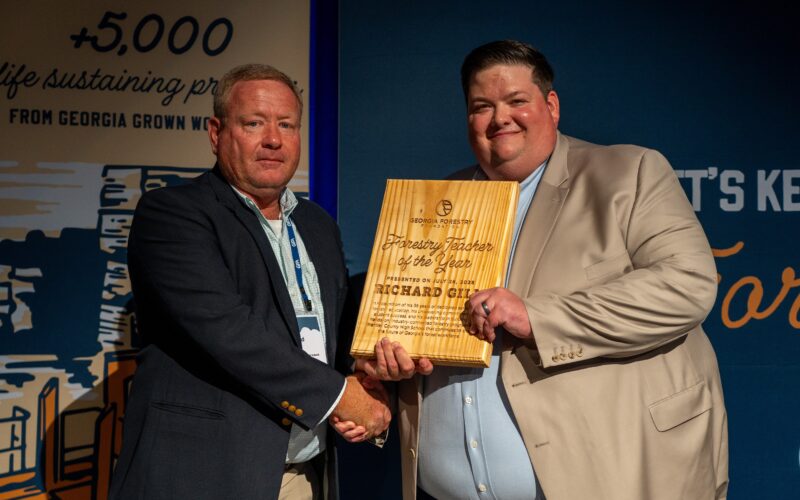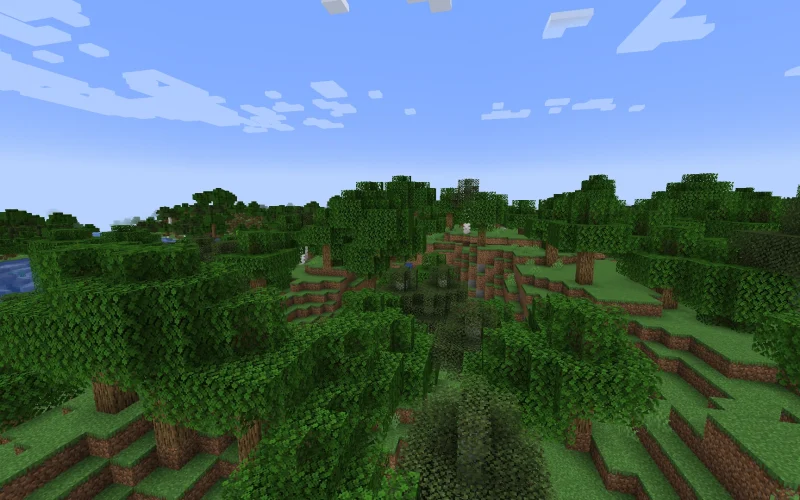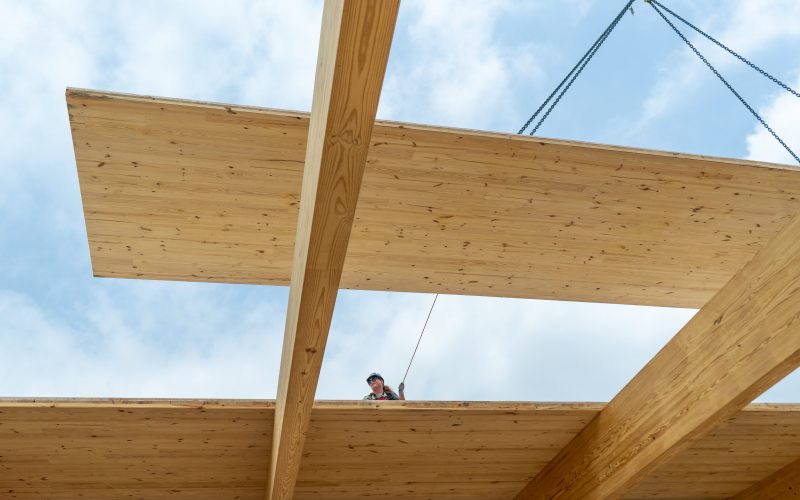LEVERAGING WORKING FORESTS TO CONNECT OUR CITIES TO A SUSTAINABLE FUTURE
As Seen in “Georgia Forestry” Magazine
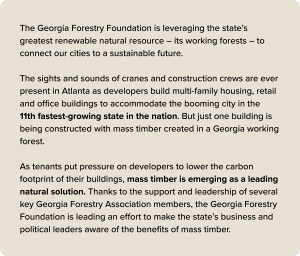
The Right Vision, The Right Place, The Right Leader
Troy Harris, a steadfast Georgia forestry leader, is the Managing Director of Timberland and Innovative Wood Products at Jamestown. Jamestown has developed some of the hottest real estate properties in the world, including Chelsea Market and One Times Square in New York, and Ponce City Market in Atlanta. Harris and his team manage the company’s timber fund, which includes a little over 110,000 acres of timberland in the US South and Northeast. Since 2015, Harris has been working behind the scenes to help the company’s leaders understand the connection between the timberland they manage and the potential of engineered mass timber as a pathway to enhance the business and environmental performance of their real estate holdings.
Harris’ years of work to cultivate relationships and drive conversations across the forestry and real estate development communities is bearing fruit, as mass timber columns and beams fall into place like a Lego set at Ponce City Market’s first mixed-use mass timber building known as 619 Ponce.
Ponce City Market is an iconic Atlanta property that was originally constructed in 1929 as a Sears, Roebuck & Co. warehouse and showroom. Jamestown restored the property as a mixed-use development with a world-class food hall, retail stores, an entertainment venue, office space and multi-family housing.
“When we originally decided to do a mass timber building, it was all about design – how would it look and feel inside the building,” Harris said. “We have this amazing adaptive re-use building with Ponce City Market that is quirky and fun, but it is hard to make a new building look and feel the same way. In the end we felt that mass timber allowed us to achieve that same sense of place and authenticity in our Phase 2 expansion with 619 Ponce.”
In 2020, Jamestown announced Ponce City Market’s Phase 2 expansion, which includes 619 Ponce, the state’s first locally grown and manufactured mass timber building. The building will include 87,000 square feet of office space and 27,000 square feet of retail space. Shoppers in stores in 619 Ponce will have the opportunity to see, touch and feel the mass timber panels and beams during store business hours, which is unusual as most mass timber buildings in North America are office or residential buildings that are closed to the public. This offers an opportunity to educate people about the benefits of working forests and the entire mass timber supply chain without leaving Atlanta.
From Seedling to Mass Timber Solution
This is a watershed moment for the growth of mass timber in Atlanta. It is also a unique opportunity for Georgia’s forestry community. Most mass timber in the U.S. South has been imported from the Pacific Northwest, Canada or Eastern Europe. Some of the wood used at 619 Ponce was planted in 1996 and grown on Jamestown’s land in Lumpkin, Georgia, sawn into lumber at Georgia-Pacific’s mill in Albany, Georgia, and manufactured by SmartLam in Dothan, Alabama. The entire supply chain for the building is under 600 miles, making it truly locally grown and manufactured.
“When we originally priced out the building, it turned out that it would be cheaper to build with mass timber that was imported from Austria, but as a company that owns timberland in Georgia, that just seemed wrong,” Harris said.
Most mass timber buildings in the U.S. South to date have been built using panels and beams that have been sourced from other countries or the Pacific Northwest, due to the maturity of the market and manufacturing sector in those areas. 619 Ponce, however, will be a hallmark for sustainable, locally grown construction.
According to WoodWorks, the potential carbon benefit of 619 Ponce is 2,583 metric tons of carbon dioxide, which is equivalent to removing 546 cars from the road for a year. With more than two thirds of the state covered in forests, Georgia grows the volume of wood needed for the entire building in under 17 minutes. Most importantly, thanks to the growth of healthy markets for mass timber and other forest products, the land where the trees were harvested by Jamestown will be replanted – and the sustainable cycle begins again.
“Ponce City Market has been a beacon of sustainable redevelopment for Atlanta and the State of Georgia,” said Andres Villegas, President & CEO of the Georgia Forestry Association and Foundation. “We are thankful for Troy and Jamestown’s leadership and investment in state’s first Georgia-grown mass timber project, showcasing the ability of Georgia’s working forests to capture carbon and sustainably support the needs of a growing state.”
The City of Atlanta is an economic leader for the United States, and Ponce City Market is a shining example of what thoughtful community-based architecture can accomplish for investors and the community alike.
“The legacy of 619 Ponce will be a living model for architects, engineers and developers that proves we can locally source and manufacture mass timber from the U.S. South,” Harris said. “As important as the farm to table movement was for agriculture and how we eat today, we’ve done the same thing for mass timber and timber growers with our Seedlings to Solutions concept.”
Leveraging the Opportunity to Tell Forestry’s Sustainability Story
In 2021, the Georgia Forestry Foundation was awarded three separate grants from the U.S. Forest Service’s Wood Innovations program to enhance its efforts across the state and introduce millions of people to mass timber. As a result, GFF is currently leading three mass timber education efforts, all centered around the 619 Ponce construction, wrapped into the ‘Seedlings to Solutions‘ initiative.
1 | Building Public Awareness of Mass Timber
In 2022 GFF began filming a documentary titled “Seedlings to Solutions” to tell the story of Jamestown’s 619 Ponce, highlighting perspectives from the leaders and stewards who made this building possible including the Forest Resource Consultants forester who planted the trees on Jamestown land in 1996, to Evergreen Timber Co., the woman-owned logging company that harvested the trees that were sent to the Georgia-Pacific Albany sawmill.
In addition, the Foundation worked with Formations Studios and Georgia Tech to develop an eye-catching mass timber exhibit called the Torus Arch, installed in the bustling retail courtyard at Ponce City Market. The documentary and the exhibit will be used to illuminate the economic and environmental benefits of mass timber to all Georgians.
2 | Accelerating the Utilization of Mass Timber
Starting in the Fall of 2023, GFF will be leading a Mass Timber Accelerator, which is designed to catalyze and promote active mass timber developments in metro Atlanta by conducting early design phase technical and financial feasibility studies. The Accelerator program will be competitive and application-based. The program seeks to attract, support, and empower new mass timber practitioners. GFF will work together with the USDA Forest Service, Softwood Lumber Board, WoodWorks, The American Institute of Architects, Southface and the City of Atlanta to connect with a broad group of architects, engineers and construction professionals.
3 | Immersing Yourself in ‘The Forest’
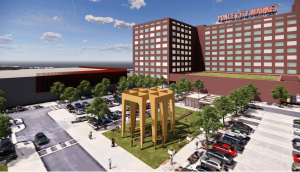
GFF is working with Jamestown to build an immersive mass timber venue and educational installation at Ponce City Market called The Forest. Once constructed, The Forest will introduce millions of visitors from across Georgia and the country to mass timber and increase momentum for a thriving mass timber industry in Georgia. GFF will promote the structure through events and in the media to engage local architecture, engineering, and construction professionals, as well as other influencers, journalists and policymakers to grow the mass timber movement in Georgia.
Planting it Forward
For years, the forestry community has said that we need to do a better job of telling our story, and as our population has shifted primarily to urban environments, our population has become more and more distanced from the land and industries that sustain urban living. Now, the forestry sector has a clear and present opportunity to reach millions of Georgians and share the story of sustainable forestry and its stewards.
“Our industry is filled with bright, talented leaders who have cultivated this opportunity by doing what is best for the entire sector,” Villegas said. “Can you imagine where we might be in the next 10 years if we all put the full weight of our influence and resources behind this project and those to come? I think you will see a day when Georgians embrace our working forests and our status as the #1 forestry state in the same way they embrace Georgia Peaches or the Atlanta Braves, but it takes all of us to support it.”




